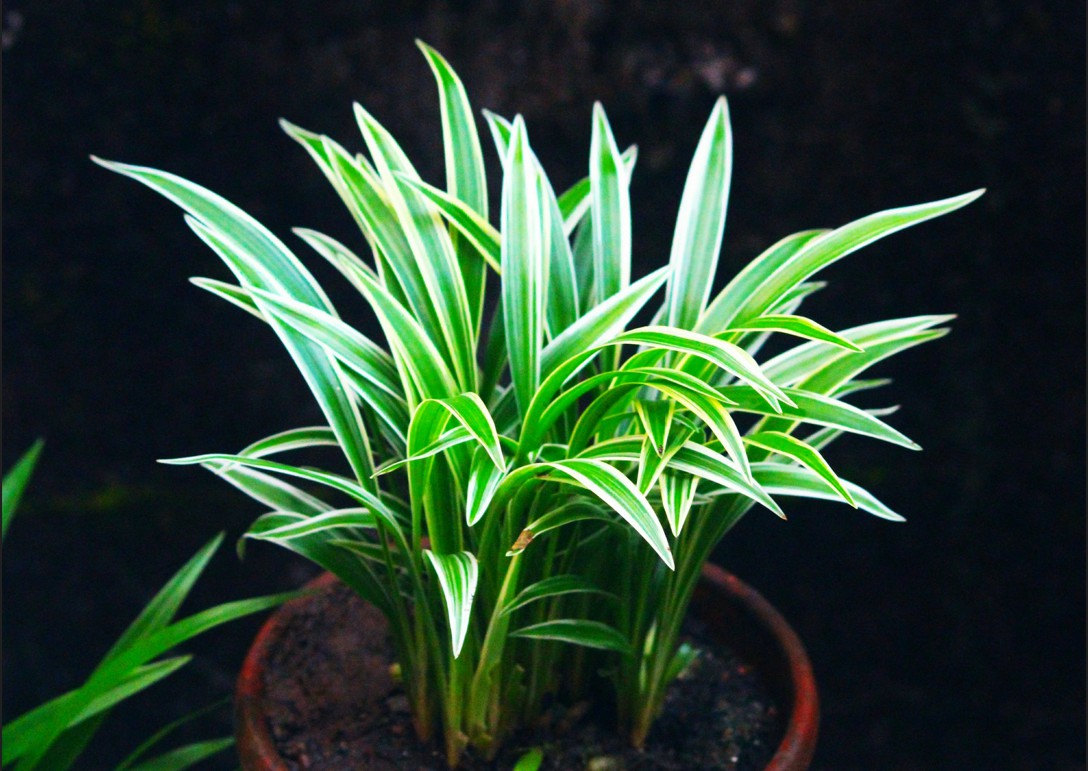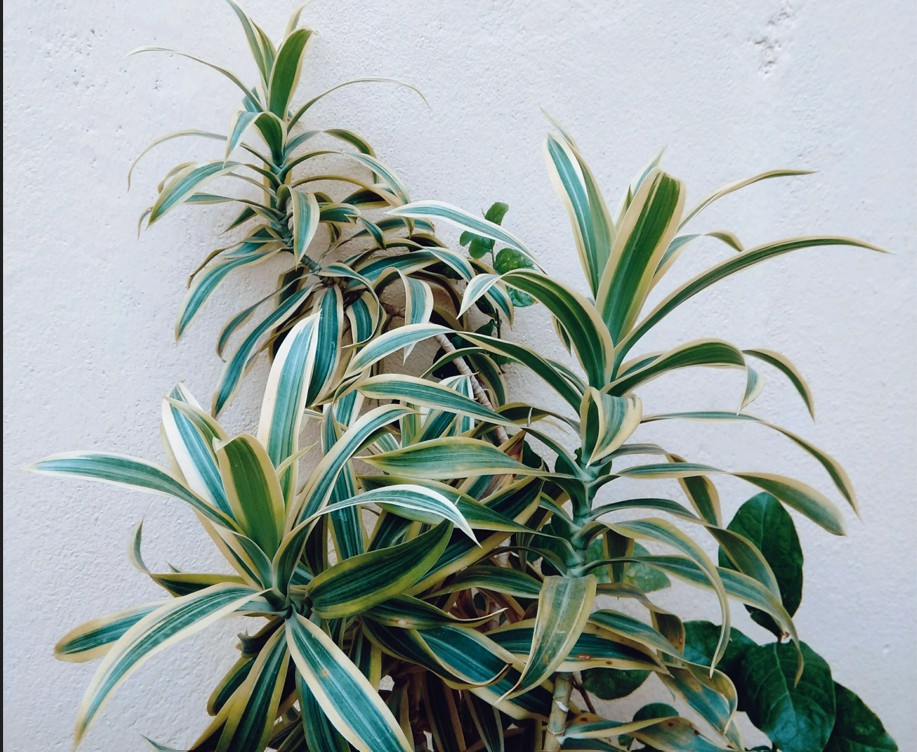The dragon tree, scientifically known as Dracaena marginata, stands out as one of the most popular houseplants worldwide. Native to Madagascar, this eye-catching plant features sword-like green leaves with striking red edges on slender stems. Perfect for beginners, this nearly indestructible plant combines beauty with incredible hardiness.
What Makes Dragon Tree Special?
Dragon Tree deserves its reputation as a favorite houseplant. NASA’s Clean Air Study confirmed it removes formaldehyde from indoor air. Your home air quality improves when you add this plant to your space. The plant tolerates drought conditions extremely well. You don’t need to water it often. It forgives missed watering better than most houseplants.
The plant adapts to different light situations with ease. It grows in bright spots or darker corners. Most houseplants demand specific light conditions. Dragon Tree accepts what you offer. The distinctive appearance creates a dramatic statement in any room. The spiky foliage presents an architectural form that draws attention.
Dragon Tree grows slowly over time. You won’t need constant maintenance or frequent repotting. This plant takes about ten years to reach just a few feet tall indoors. Outdoor specimens can reach 20 feet eventually. Indoor plants stay under 6 feet, especially if you prune them occasionally.
Light Requirements
Dragon Tree shows incredible flexibility regarding light conditions:
- Ideal setting: Bright, indirect light
- Also tolerates: Partial shade and lower light areas
- Avoid: Direct sunlight, which can burn the leaves
Plants kept in lower light grow slower and develop smaller leaves with less intense color. The red edges might appear less vibrant in dimmer locations.
Watering Needs
Dragon Trees prefer a careful watering schedule:
- When to water: Wait until the top half of the soil feels dry
- How often: Typically every three weeks, but check soil moisture first
- Water type: Use distilled or non-fluoridated water
- Technique: Water thoroughly until it drains from the bottom holes
Tap water often contains fluoride and salts that cause brown leaf tips – one of the most common problems with these plants. Switching to distilled water solves this issue quickly.
Soil and Potting
The right soil creates the foundation for a healthy Dragon Tree:
- Soil type: Loamy, well-draining potting mix
- Soil pH: Neutral to slightly acidic (6-7)
- Pot size: Choose containers just a few inches larger than the root ball
- Pot features: Must have drainage holes
Dragon Trees grow slowly, so repotting happens infrequently – typically every 2-3 years. Replace compacted soil annually to maintain proper drainage.
Temperature and Humidity
These tropical plants prefer comfortable indoor conditions:
- Temperature: 70-80°F (21-27°C)
- Humidity: Standard household humidity works fine
- Protection: Keep away from cold drafts, air conditioners, and heating vents
If your home runs particularly dry, consider these humidity-boosting options:
- Group with other houseplants
- Place in naturally humid areas like bathrooms
- Set on a pebble tray with water (keep the pot above water level)
- Mist lightly every few days
Fertilizing Schedule
Dragon Trees need minimal feeding:
- Frequency: Once or twice yearly is sufficient
- Season: Apply at the beginning of spring
- Type: Balanced liquid fertilizer
- Amount: Follow package directions – never exceed recommended strength
Additional fertilizer won’t significantly speed growth due to the plant’s naturally slow development.
Pruning and Shaping
Maintain your Dragon Tree’s appearance with simple pruning:
- When: Anytime, but spring works best
- How: Use clean, sharp shears to cut stems to the desired height
- Results: Cutting the top encourages branching below the cut
- Normal shedding: Lower leaves naturally yellow and drop – simply remove them
Propagation Made Easy
You can expand your collection through straightforward propagation methods. Stem cuttings work best, placed in water or soil. Spring marks the ideal time during active growth phases. The plant shares itself generously when you take 8-inch stem cuttings.
Start the process by removing lower leaves from your cutting. Place the bare stem in water or moist potting soil. Position the cutting in bright, indirect light. Roots develop in about three weeks with proper care. New leaf growth indicates successful rooting has occurred.
Many people find water propagation easiest. It allows you to monitor root development. Once roots reach 1-2 inches long, you can transfer the cutting to the soil. The new plant establishes quickly and grows into a clone of the parent. You can create multiple plants from one mature specimen.
Common Varieties
Several Dragon Tree varieties offer different decorative looks. Each type brings unique features to your indoor garden. The differences appear mainly in leaf coloration and patterns.
Dracaena marginata ‘Tricolor’ showcases dark red edges on green leaves. A distinctive ivory stripe runs down the center of each leaf. This three-color effect creates dramatic contrast. The plant stands out even among other houseplants.
D. marginata ‘Colorama’ appears predominantly pink at first glance. A closer look reveals white and green variegation throughout the leaves. This variety needs very bright light to maintain its colorful display. Lower light conditions cause the plant to revert to greener tones.
D. marginata ‘Bicolor’ features bold red and green stripes. The two-tone effect looks striking in any setting. The contrast becomes more pronounced as the plant matures. Each new leaf brings fresh color to the display.
Troubleshooting Common Problems
Even this hardy plant faces occasional challenges. Most issues relate to watering practices or environmental conditions. You can solve most problems with simple adjustments to care.
Leaf Issues
Brown tips indicate fluoride in water or low humidity. Switch to distilled water and increase ambient moisture around the plant. The new leaves will emerge healthy once you correct these factors.
Yellow lower leaves suggest the plant needs more water. Check soil moisture more frequently and adjust your watering schedule. The plant tells you it’s thirsty through this yellowing signal.
Drooping leaves point to a thirsty plant or possible root rot. Check the soil first. Dry soil means the plant needs water. Wet soil with droopy leaves indicates root problems from overwatering.
Crispy leaves result from too much direct sunlight. The leaves cannot recover once damaged, but new growth will appear healthy.
Soft, brown leaves develop from overwatering or cold exposure. Both conditions damage root systems. Adjust watering habits and maintain warmer temperatures. Remove affected leaves to encourage fresh growth.
Pest Problems
Dragon Trees attract certain pests despite their resilience. Spider mites cause tiny speckling on leaves and leave fine webbing. Mealybugs appear as white cottony spots at leaf joints. Scale insects form hard bumps along stems and leaf undersides. Thrips create silvery patches and black specks on leaves.
Combat these pests with effective treatments. Insecticidal soap works well for most infestations. Neem oil provides both treatment and prevention benefits. Horticultural oil suffocates many common pests on contact.
Apply your chosen treatment to all plant surfaces. The leaves, stems, and soil need complete coverage. Repeat applications may prove necessary for stubborn infestations. The plant recovers quickly once pests disappear.
Important Safety Note
Dragon Tree contains compounds toxic to pets. The plant poses no threat to humans. Cats and dogs must not chew on the leaves. Symptoms of ingestion include vomiting, excessive drooling, and lethargy in pets.
Keep this plant away from curious animals. Place it on high shelves or in rooms pets cannot access. Choose pet-safe alternatives if your animals like to nibble plants. The ASPCA lists Dragon Tree as definitely toxic to cats and dogs.
This safety concern should not discourage plant lovers without pets. The Dragon Tree makes an excellent houseplant in pet-free homes or in homes where animals don’t interact with plants.
Perfect Plant Placement
The Dragon Tree’s distinctive shape serves specific decorative purposes. You can create privacy screens near windows with taller specimens. The plant fills empty corners beautifully with its architectural form. Blank walls gain interest when these plants stand nearby.
Position Dragon Trees at the end of sofas or chairs as living accent pieces. Smaller, younger plants add texture to tabletops and desks. Their grassy appearance makes them popular additions to dish gardens. The vertical growth pattern works well in spaces with limited floor area.
The plant makes a statement wherever you place it. Its spiky form contrasts with most home furnishings. The distinctive silhouette draws attention in any room. Strategic placement enhances both the plant and your living space.
Companion Plants
Some plants pair exceptionally well with Dragon Trees. These companions create balanced plant displays. The contrasts in form and texture enhance both plants.
Calathea offers complementary variegated foliage next to Dragon Trees. The broad, patterned leaves contrast beautifully with spiky dragon tree foliage. Both plants enjoy similar care requirements. They coexist harmoniously in the same general conditions.
Arrowhead Plant provides a lush contrast to the Dragon Tree’s architectural form. The heart-shaped leaves create a completely different texture. The fuller growth habit fills spaces around the more upright Dragon Tree. Together, they create a professional-looking plant arrangement.
ZZ Plant creates an easy-care combination with Dragon Tree. Both plants tolerate similar light levels. They both forgive occasional neglect. This pairing works especially well for busy people or those new to plant care.
Final Thoughts
The Dragon Tree offers the perfect combination of striking appearance and forgiving nature. With minimal care requirements and maximum visual impact, this Madagascar native deserves its reputation as one of the best houseplants for beginners and experts alike.
Whether you place it as a statement piece in your living room or add it to a collection of tropical plants, the Dragon Tree rewards you with years of architectural beauty and air-purifying benefits.
Frequently Asked Questions
How tall does a Dragon Tree grow indoors?
Indoor Dragon Trees typically reach 6 feet at maximum height. The plant grows very slowly. It takes about 8-10 years to reach 2-3 feet tall. You can control the height through regular pruning. Most indoor specimens stay manageable for typical home ceilings.
How long do Dragon Trees live?
Dragon Trees live extraordinarily long lives. Wild specimens can survive hundreds of years. Indoor plants typically live 10-15 years with proper care. The plant becomes a long-term companion in your home. Many people pass these plants down through generations.
Does Dragon Tree bloom indoors?
Dragon Trees rarely flower indoors. The plant focuses energy on foliage rather than flowers in typical home conditions. Outdoor plants may produce small white flowers in spring. These blooms appear only on mature specimens in ideal outdoor environments. Consider the plant a foliage specimen rather than a flowering one.
How often should I repot my Dragon Tree?
Report your Dragon Tree every 2-3 years. The slow growth rate means it doesn’t outgrow containers quickly. Look for roots coming through drainage holes as a sign to report. Choose a container only 2 inches larger in diameter than the current pot. Annual soil refreshment helps even when the plant stays in the same container.
What are the disadvantages of growing Dragon Trees?
Dragon Tree attracts certain pests like scale insects and mites. The plant requires careful watering – not too much, not too little. It proves toxic to pets if they chew the leaves.
Read Next: Philodendron Micans Care Guide to Growing Velvet Leaf Philodendron





